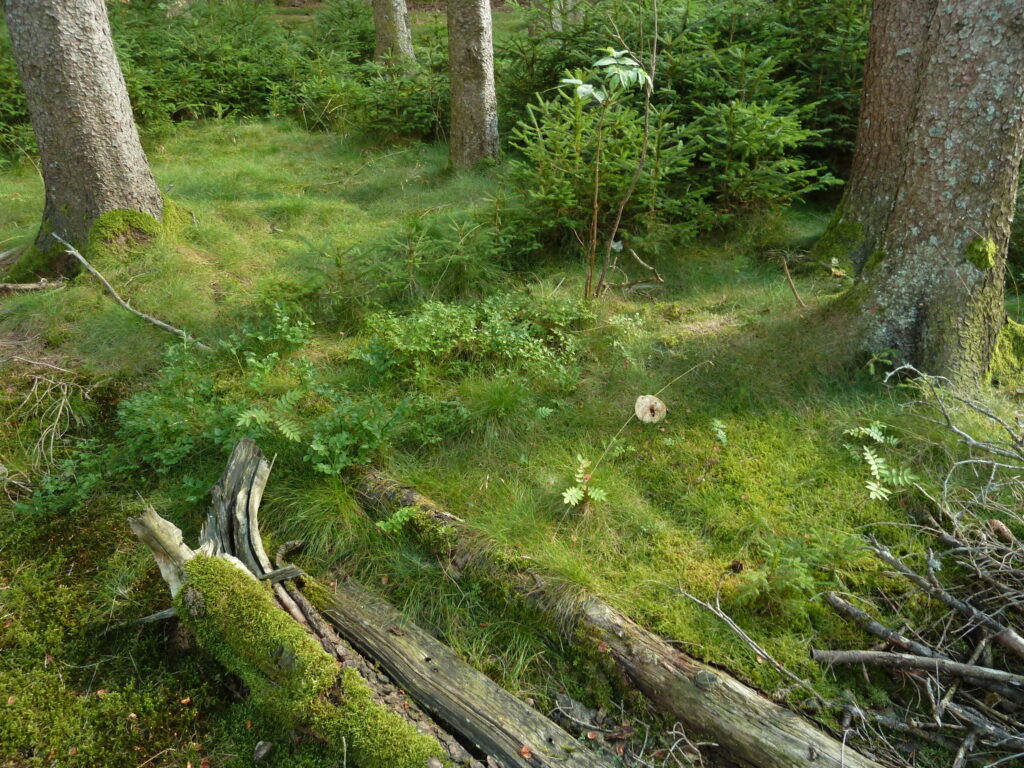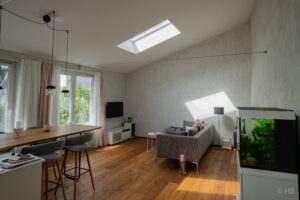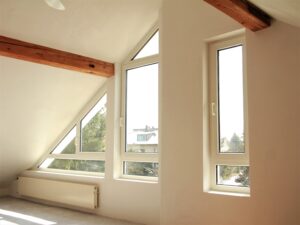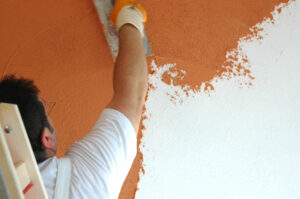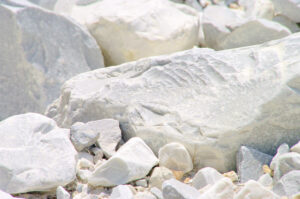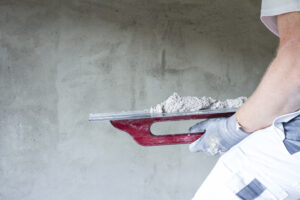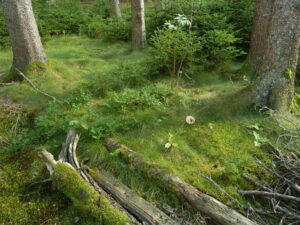Pit lime in the cycle process ...
Pit lime a building material of the elements. Originated from life in the water. Borrowed from the earth as limestone. When burned in a fire and extinguished with water, limestone has turned into lime. Air gives it what it needs to turn back to limestone. Simply a fascinating building material in life.
As long as the sump lime is in our extinguishing tanks (lime pits) or afterwards in the bucket, it is, so to speak, concerned with itself. A blanket of water prevents the calcium hydroxide from coming into contact with CO₂ from the ambient air.
Only when the sump lime is applied to walls or ceilings does the further process of the lime cycle begin.
Now the excess water evaporates and the lime begins its work as a room air filter. Now it absorbs CO₂ through the constant exchange of water vapor uptake and release from the room air. The amount of carbon dioxide that was expelled from the limestone during burning is now absorbed from the room air over a long period of time.
The carbon dioxide reacts with the calcium hydroxide. This process turns calcium hydroxide back into calcium carbonate, i.e. limestone. The process of converting calcium hydroxide into calcium carbonate (limestone) is called carbonation. Because sump lime can only react by absorbing CO₂ from the ambient air, it is classified as air lime in the lime standard.
When this process is completely done you have on the walls and ceilings limestone. Then the lime cycle has closed. The original limestone has become limestone again. Now you could start all over again. Burn limestone - extinguish it and use it again as a building material.
All admixtures have an influence on the duration of the carbonation. Cellulose, for example, is added to conventional lime products to increase the water retention capacity. So that these plasters are safe to work with and do not burn (burning: plaster dries out too quickly, it is unstable, powdery with poor adhesion to the substrate).
Cellulose then also has the effect that the lime plaster holds moisture longer in the usage phase than our cellulose-free lime plasters.
The re-drying is faster with pure sump lime. Since the moisture content in the lime plaster surface has an effect on the rate of carbonation, we are happy to be able to do without cellulose. As a result, the excellent properties of the sump lime are effective for a longer period of time.
All the other additives such as water repellants, air-entraining agents, hydraulic additives, cement, adhesives and other plastics that make up conventional so-called lime plasters impair the effect of the lime content and reduce the duration of the effect enormously. That’s why we’re not upset about something like this at KalkKind.
Of course, the duration also depends on how high the proportion of sump lime is in the sump lime plasters that are applied to the walls and ceilings.
In our lime plasters, the proportion is 40%. The other 60% then consist, depending on the type of plaster, of mineral mixtures of marble sand, marble powder, expanded glass granulate or vermiculite.
With the conventional standard lime plasters on the market, manufacturers are allowed to refer to a mixture in which just 4% hydrated lime is present as lime plaster. This is regulated in the European lime standard DIN EN 459-1
And our KalkKind lime can do all of this
Best natural protection against mold
- Humidity regulating.
- Height Water absorption (with 3mm plaster thickness 1 liter per square meter).
- Inorganic, purely mineral, no breeding ground for mold.
- Higher pH value of 12.6 has a disinfecting and antiseptic effect.
- Fast re-drying because macroporous Pore structure and waiver water-retaining Components.
- Duration of effect higher than with others Lime plasters in the market.
- Duration of effect can be extended as required by introducing new potassium hydroxide.
Completely emission-free and odor-binding
- It no emissions are released and the room air is therefore not polluted. There are no volatile components.
- Odors that will arise in the room are quickly neutralized.
- Also helps to break down odors from the subsurface.
Help for allergy-friendly interiors
- Manage very good indoor air hygiene.
- Reduces germs and bacteria from the room air.
- Pleasant , cozy Indoor climate.
Reduces pollutants
- Practical studies show that the volatile hazardous substances in the air can be up to 90% were reduced.
- Also reduces the pollutants from the components (pollutant remediation, odor damage, fire damage).
N Sustainable and permanent
- the Pit lime materials are building materials that meet the requirements of sustainability and durability in the best sense of the word.
- This applies not only to the surfaces themselves, but also to the effect on the structure in which it is used.
Protects the building fabric
- the Surfaces ensure that moisture absorbed by the building structure can dry out quickly.
- Pit lime has an antibacterial effect, which helps to protect the structure permanently and to preserve the building fabric.
No titanium dioxide
- Of the The high degree of whiteness of the lime materials is achieved solely by the pure white lime, marble sand and marble flour.
- Titanium dioxide does not come to Mission.
Working dust-free
- Since January 2019 stricter values for dust pollution.
- Low-dust work with lime instead of dry mortar.
- No Intermediate sanding.

